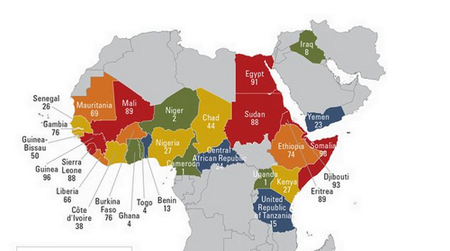UNICEF released a major report today on Female Genital Mutilation, the atavistic and brutal practice that is far too prevalent in much of the developing world. The report, Female Genital Mutilation/Cutting: A statistical overview and exploration of the dynamics of change is the first ever report to systematically measure rates of FGM, public attitudes toward the practice and also solutions for ending FGM once and for all.
Here’s a map showing where FGM is most concentrated.


In all more than 125 million girls have been subjected to this torture, and UNICEF says that 30 million girls are at risk of being cut in the next decade.
The report, however, contains some hopeful news. The practice is less prevalent than it was 30 years ago. Also, UNICEF has found that a majority of people in most of the countries pictured now oppose FGM. The key policy question for UNICEF and other groups who want to end FGM once and for all is how to make that silent majority more vocal. To that end, UNICEF recommends specific steps like:
- Working with local cultural traditions rather than against them, recognizing that attitudes and conformity to FGM/C vary among groups within and across national borders;
- Seeking to change individual attitudes about FGM/C, while addressing the entrenched expectations surrounding the practice across wider social groups;
- Finding ways to make visible the hidden attitudes that favour the abandonment of FGM/C so families know that they are not alone – a crucial step to create a necessary critical mass and generate a chain reaction against FGM/C;
- Increasing exposure of groups that still practice FGM/C to groups that do not;
- Promoting the abandonment of FGM/C alongside improved status and opportunities for girls, rather than advocating for milder forms of the practice, such as ‘symbolic’ circumcision;
- Continuing to gather data to inform policies and programmes, as a vital part of efforts to eliminate FGM/C.
The full report is well worth a read.
